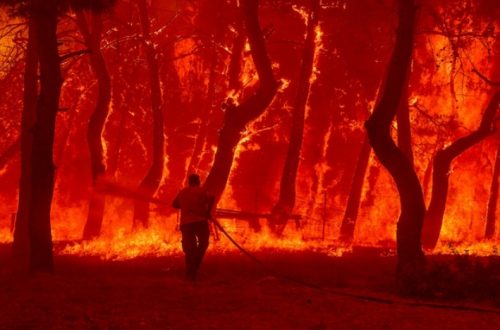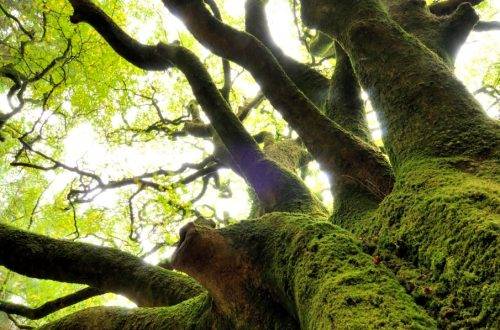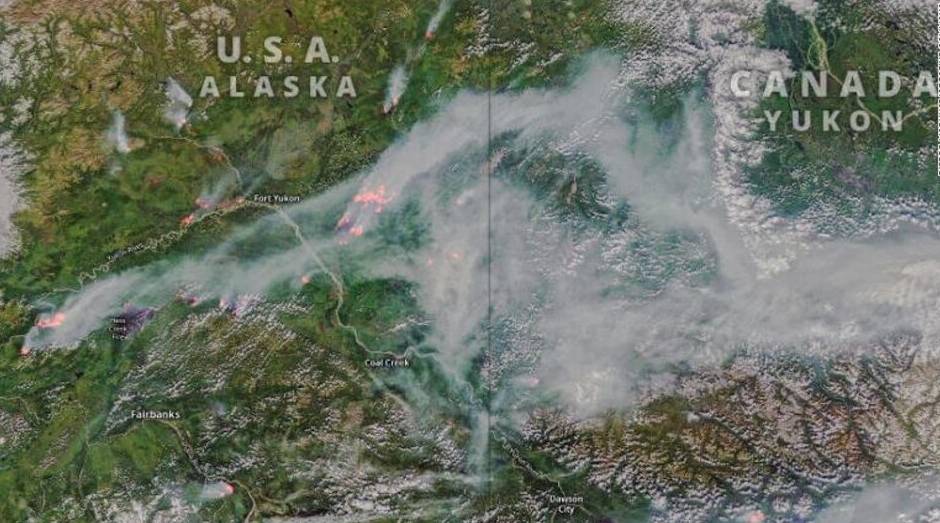
North American Boreal Forest Fires Show Decreased Intensity Compared to 150 Years Ago
In early May 2023, Western Canada experienced an alarming outbreak of forest fires due to extremely hot and dry weather conditions. The situation became so severe that the Alberta government declared a state of emergency, leading to the evacuation of nearly 30,000 individuals as of the time of writing this article. While it is still too early to determine the full extent of this unprecedented event, recent research provides valuable insights to help understand it within a wider historical context.
In the vast expanse of North American boreal forests, millions of hectares can be engulfed by flames within a single year, while in other years, the fire activity may appear relatively insignificant. However, since the early 1960s, there has been an overall upward trend in forest fires, likely attributed, at least in part, to the influence of climate change. This complex relationship underscores the need for a comprehensive understanding of the factors driving these fire patterns.
In order to gain a deeper understanding of the long-term dynamics, team of experts specializing in forest fires and forest ecology embarked on a comprehensive study. Surprisingly, findings challenge conventional assumptions, revealing that North American boreal forests experienced higher levels of fire activity in the past compared to the present. However, before delving into further details, it is crucial to provide some contextual background and clarify certain aspects of research.
What causes a forest fire?
For years, scientists have been grappling with the question of what factors contribute to the occurrence of forest fires. Recent research conducted over the past few decades has shed light on this matter, highlighting the pivotal role played by the interplay of vegetation, weather, and triggers.
When it comes to vegetation, the type and density of the fuel can make all the difference. For instance, expansive areas covered by dense coniferous forests are inherently more susceptible to fire compared to deciduous forests with moist undergrowth or sparser vegetation.
When it comes to forest fires, the meteorological conditions play a crucial role in determining the flammability of the fuel. Dry and windy weather conditions create a favorable environment for the ignition and rapid spread of fires.
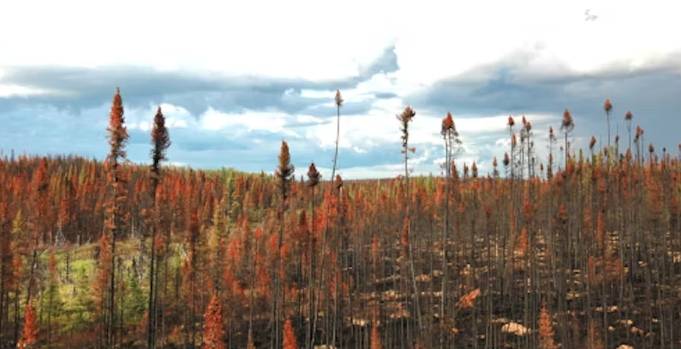
However, the convergence of favorable conditions alone is insufficient to ignite a forest fire; a trigger is needed. Two primary triggers exist: lightning and human activity. Although humans are responsible for a significant number of fire ignitions in recent decades in Canada, it is lightning strikes that account for the largest areas burned.
Impacts on society
Forest fires, as frequently reported in the media, bring tragic consequences to communities. One such example is the 2016 Fort McMurray disaster, where a massive 600,000-hectare area was engulfed in flames, forcing the evacuation of over 88,000 people.
These fires not only pose a threat to human lives but also present an economic challenge for the forest industry. Millions of trees, intended for use in various factories, are consumed by these fires, resulting in significant losses.
Moreover, forest fires contribute to the acceleration of climate change. The burning of vegetation releases substantial amounts of CO2 into the atmosphere, exacerbating the already pressing environmental concerns we face.
A strong influence on ecosystems, but not necessarily negative!
The aftermath of a forest fire often presents an apocalyptic scene, leaving profound imprints on ecosystems and biodiversity. Certain species, such as the woodland caribou, heavily rely on mature coniferous forests for their survival, making fires a significant threat to their existence.
However, fires have long been an integral part of the natural landscape, and in some cases, they are essential for the proper ecological functioning of forests. Over time, the scorched landscape gives way to the growth of vigorous young trees, gradually transforming into a mature forest within 50 to 100 years. Some tree species even depend on fire for regeneration, ensuring their long-term sustainability. Examples include the jack pine and black spruce, which are highly valued by the forest industry.
Burned forests create favorable conditions for various animal species. Charred trunks provide a feeding ground for insects, including the black beetle. These insects, in turn, become a plentiful food source for birds like the black-backed woodpecker, which can even utilize standing snags (dead trees with rooted trunks) as nesting sites.
The impact of fires cannot be simply categorized as good or bad; it all depends on the perspective. As with many ecological phenomena, it is a matter of balance. Fires play a role in the natural cycle of forests, facilitating the regeneration and sustenance of certain species. While they may bring destruction, they also create opportunities for new life and support the intricate web of life in ecosystems.
How to reconstruct the history of the fires of the last centuries
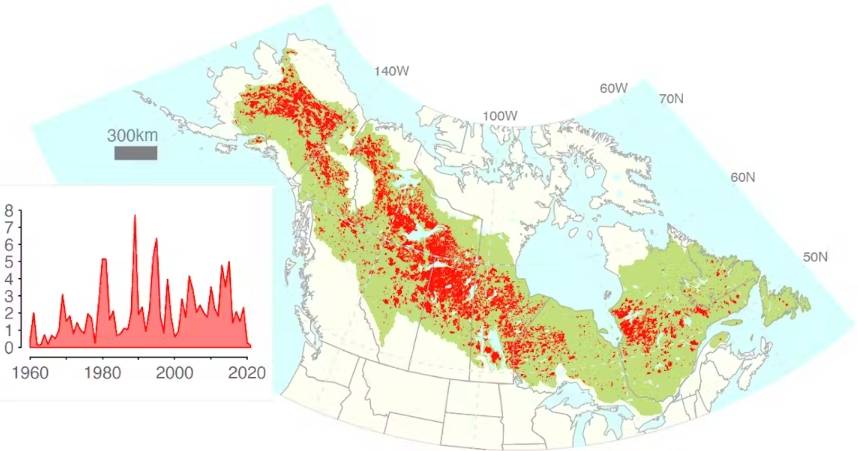
While detailed records of fires in Canada only exist from the 1960s onwards, scientists have found a way to piece together the fire history of the past few centuries. By examining the age of trees within the boreal forest, valuable information about the occurrence and frequency of fires can be obtained.
Fires are the primary natural disturbance in the boreal forest ecosystem. By studying the age of the oldest trees that have not been subject to logging, researchers can determine the most recent time the forest experienced a fire. This method allows for the reconstruction of fire patterns and provides insights into the historical dynamics of fire occurrence in the region.
A downward trend in burnt areas over the past few centuries
In a comprehensive meta-analysis, we examined 16 independent studies that utilized the tree age method to reconstruct fire history in various regions of the North American boreal forest, spanning from Alaska to Quebec. The collective findings of these studies are remarkable: the extent of fire activity in North American boreal forests was considerably higher 150 years ago compared to the present day. Analyzing data from the period between 1700 and 1850, we observed that annual burned areas were two to more than ten times larger than what has been recorded in the last four decades.
The reasons behind this long-term downward trend are not yet fully understood in the current state of research. However, climate emerges as one of the potential factors. The period from 1700 to 1850 coincided with the end of the Little Ice Age, characterized by colder temperatures. This period likely also experienced drier conditions, making the forests more susceptible to fires. While climate is a significant suspect, further investigation is required to unravel the complex interplay of factors influencing fire patterns in the boreal forest.
Another potential factor contributing to the decrease in forest fires is changes in vegetation flammability. The forestry industry’s logging activities during the 20th century may have altered the composition of forests, resulting in less flammable vegetation. Additionally, advancements in firefighting technologies and increased financial resources allocated to fire suppression efforts throughout the 20th century could have played a role in reducing fire occurrence. The introduction of water bomber planes in the 1970s, for instance, marked a significant milestone in fire suppression capabilities. These policies and resources likely contributed to the decline in fires observed in certain regions. However, it is important to continue studying and understanding the intricate dynamics between vegetation, human activities, and firefighting efforts to gain a comprehensive perspective on the factors influencing fire patterns in the boreal forest.
Nevertheless, there was already a decline in fires during the 19th century, a period preceding significant human influence on the North American boreal forest environment. This suggests that climate factors played a more prominent role in the reduction of fires, with human impacts later overlaying these natural dynamics. It is crucial to further investigate these questions and acquire new research insights. Gaining a better understanding of the historical patterns of fire occurrence allows us to anticipate and predict future scenarios in light of climate change. By unraveling the complex interplay between climate, human activities, and fire behavior, we can better prepare for the challenges that lie ahead.


